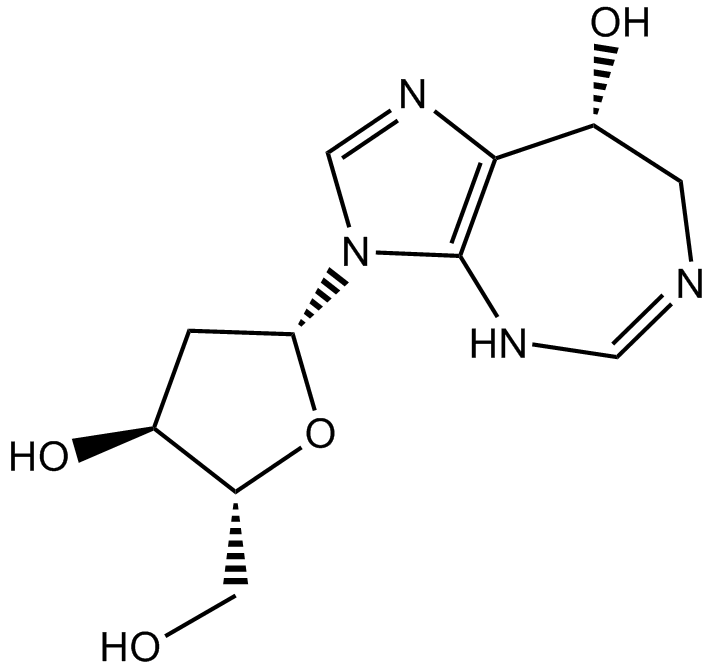Pentostatin (Synonyms: CI 825, CL 67310465, DCF, 2′-Deoxycoformycin, Deoxycoformycin, NSC 218321, NSC 247520) |
| Katalog-Nr.GC12200 |
A purine antimetabolite and an ADA inhibitor
Products are for research use only. Not for human use. We do not sell to patients.

Cas No.: 53910-25-1
Sample solution is provided at 25 µL, 10mM.
Pentostatin is a nucleoside analog and also is a potent inhibitor of adenosine deaminase. It has a broad spectrum of immunomodulatory activities. [1] The capacity of this purine analogue to inhibit proliferation and to induce apoptosis of T-cells in combination with its mild toxicity results in the approach to use pentostatin in steroid-refractory aGvHD.[2]
Chronic graft-versus-host disease (GVHD) is the main cause of late morbidity and non–relapse mortality after hematopoietic stem cell transplantation (HSCT).
Most relevant to GVHD, Pentostatin causes marked reduction of CD4 and CD8 cells. There is also significant B-cell depletion with reduction of IgG levels.13 This should allow it to affect GVHD at the cellular level and thus has the potential to address the many manifestations of chronic GVHD. Pentostatin is found to be active in a phase 1 study in refractory acute GVHD. A phase 2 study of pentostatin in heavily pretreated patients (median age, 33 years; median of 4 prior regimens) with chronic GVHD showed a 55% objective response rate in 58 patients.
In comparison with other treatment options, pentostatin has some favourable characteristics and its effect is sustainable and the majority of responding patients survived. The costs for pentostatin are relatively low and the toxicity is moderate.
References:
[1]David A. Jacobsohn, Andrew L. Gilman, Alfred Rademaker et al. Evaluation of pentostatin in corticosteroid-refractory chronic graft-versus-host disease in children: a Pediatric Blood and Marrow Transplant Consortium study. BLOOD, 12 NOVEMBER 2009 _ VOLUME 114, NUMBER 20
[2] Stefan A. Klein1, Gesine Bug2, Sabine Mousset2 et al. Long term outcome of patients with steroid-refractory acute intestinal graft versus host disease after treatment with pentostatin. British Journal of Haematology, 154, 141–155
Average Rating: 5 (Based on Reviews and 30 reference(s) in Google Scholar.)
GLPBIO products are for RESEARCH USE ONLY. Please make sure your review or question is research based.
Required fields are marked with *




















